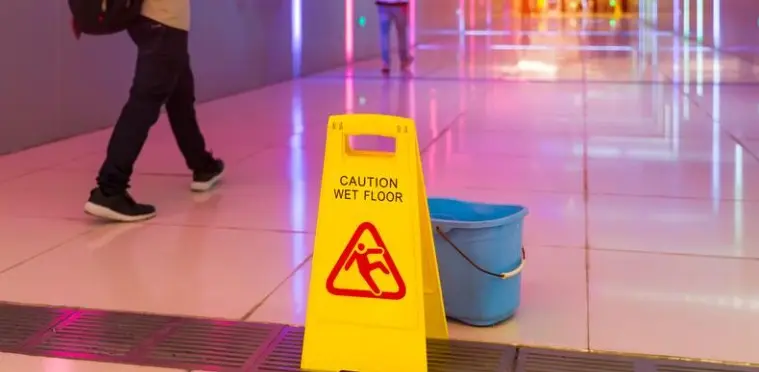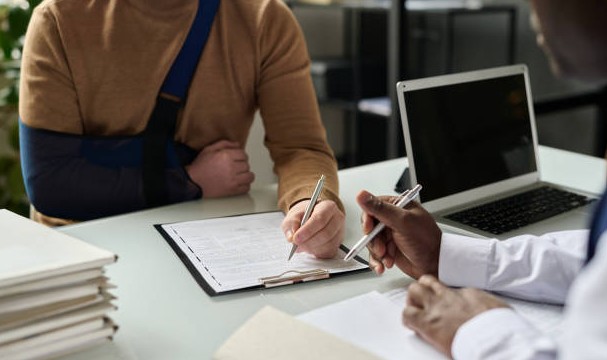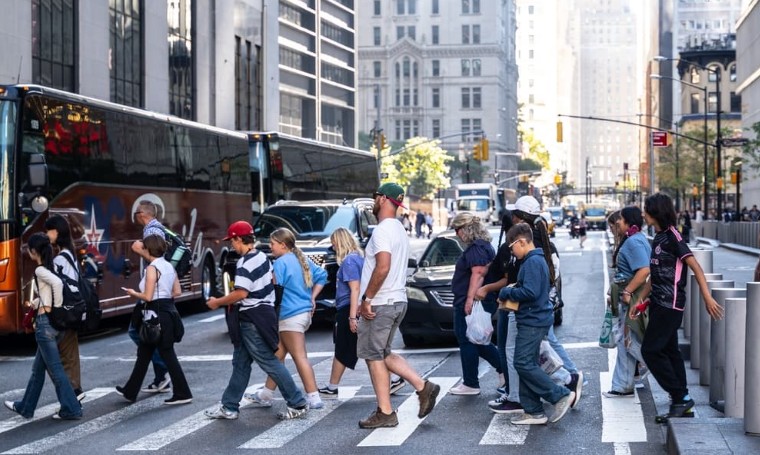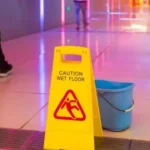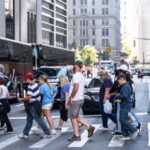
Takeaway Keys
- It’s Difficult to Determine Liability in Multi-Car Accidents
- California’s comparative fault law allows injured persons to recover damages, even if they were partially at fault.
- To prove who is responsible, accident reconstruction experts may be needed, as well as detailed evidence and expert legal advice to unravel the events.
- California Roads and Regional Conditions Increasing the Risk of Multicar Crashes
- California’s unique roads and geography, from dense traffic in Los Angeles and San Francisco to foggy highways in the Central Valley, contribute to an increased risk of accidents.
- Multi-car accidents are more likely to occur and are more difficult to resolve when drivers across the state encounter regional hazards.
- An Injury Lawyer is Crucial Following a Multi-Vehicle Accident
- Legal representation is important because these accidents involve many parties and insurance companies.
- A California car accident lawyer can investigate the crash and identify all parties responsible, negotiate with insurance companies, and maximize compensation. This includes medical bills, lost wages, and other damages.
In a Hurry? Dial +1213-596-0265 now!
Multi-Car Accidents In California
Unfortunately, multi-car accidents are a common occurrence on California’s busy highways. They are also known as pile-ups and chain-reaction crashes. Multi-car accidents can be a serious type of car accident that often results in severe injuries and complicated legal situations. These crashes can occur on a foggy freeway in Sacramento or in rush hour traffic in Los Angeles. A multi-car crash involves so many drivers, passengers, and vehicles. The question is: who is responsible?
Understanding the basics of these collisions will help you determine fault. This blog will explain what constitutes a multi-car crash, the common causes, who is liable in California, how to prove fault, and why it can be difficult.
What Is a Multi-Car Accident?
Multi-car accidents are any crashes involving at least three vehicles. The chain reaction usually starts with an initial collision between two vehicles. Additional cars are then caught in the loop. This means that one car could hit another and the impact would cause subsequent cars to collide, resulting in a pileup. These accidents are more common on highways, where cars follow closely behind each other and react quickly. These accidents are more common in dangerous conditions. For example, heavy fog, rain, or other bad weather may cause a chain reaction crash.
Multi-car collisions are usually more chaotic than accidents involving two cars. Multiple points of impact may occur, and there is a lot of confusion on the scene. The accidents can be anything from a simple three-car collision at a busy traffic intersection to a massive pile-up of dozens or more vehicles on a freeway. California has experienced some extreme cases, including major fog-related traffic pile-ups and collisions on busy Los Angeles freeways.
Statistics on car accidents show that although 50-car pileups are rare, they happen enough to cause concern. About 44 percent of California’s fatal accidents involved multiple vehicles, rather than just one vehicle. According to statistics on car accidents from the past five years, over 1,500 fatal California crashes involved three or more cars – approximately 8.4% of all fatal accidents in the state. Multi-car crashes are not uncommon in California, even though they do not make up the majority of accidents.
There Are Different Types of Multi-Car Accidents
California’s roads are filled with complex and difficult incidents. Understanding the different multi-car accidents helps you understand how these collisions happen and why it is difficult to determine fault.
- Chain-Reaction accidents: The chain reaction accident is one of the most common types of multi-car crashes. It usually starts with a collision between two vehicles, which sets off a domino effect as other vehicles cannot stop in time. They crash into vehicles in front. Chain reaction accidents occur more often in heavy traffic and during sudden stops. Distracted driving is a common factor in these crashes.
- Intersection accidents: Intersections can be hotspots of multi-car collisions. This is especially true when drivers do not yield to traffic, run a red light, or fail to judge the flow of traffic. Multiple parties may be at fault when several cars enter an intersection simultaneously. These accidents are particularly complex, since the sequence of events can be unclear and multiple drivers may share blame.
- Highway accidents: Multi-car accidents are common on high-speed highways, particularly in California’s densely populated areas. These large-scale accidents are often caused by speeding, aggressive driving, and distracted driving. A single mistake made by a driver traveling at high speed can lead to a serious accident involving many cars.
- Parking Lot accidents: Even though parking lots seem to be less dangerous than other places, they can still cause multi-car collisions. Accidents can be caused by reckless driving, failure to yield, and poor visibility. These accidents can occur at low speeds but still cause significant property damage.
The aftermath of a multi-car crash can be devastating. A car accident lawyer with experience is essential when dealing with multiple parties, conflicting reports, and complicated insurance issues. An experienced accident lawyer who is experienced can guide you through the legal process and help gather evidence to fight for fair compensation after a multiple-vehicle collision.
Common causes of Multi-car Accidents
Most multi-vehicle crashes are not “just happened” – they are triggered by certain conditions or driving behaviors which set off a series of events. Understanding different types of accidents will help drivers identify risk factors and avoid multi-car collisions. Here are the top causes of multiple-car accidents in California.
Heavy Traffic and Tailgating
California’s freeways are frequently congested, especially in major metropolitan areas such as Los Angeles and San Francisco. These cities are among the worst for traffic in the country, losing almost 95 to 97 hours per year. If drivers follow too closely, a sudden stop in these stop-and-go conditions can cause a chain-reaction crash. In California, tailgating has been a leading cause of multi-car crashes. It is responsible for nearly 4,000 injuries in one year. To prevent collisions, it is important to maintain a safe distance when there is heavy traffic.
Aggressive Driving and Speeding
Californian roads are plagued by crashes caused by excessive speed and aggressive maneuvers. In state crash statistics, “unsafe speed” is consistently at the top of the list of primary factors. This means that nearly half of the accidents are caused by someone driving too fast. A driver who speeds or weaves through lanes has less time to react, and they can easily cause a multi-car accident. Many crashes are caused by unsafe lane changes, aggressive driving, and other factors. Driving at a safe pace and avoiding reckless movements can reduce the risk of a chain reaction accident.
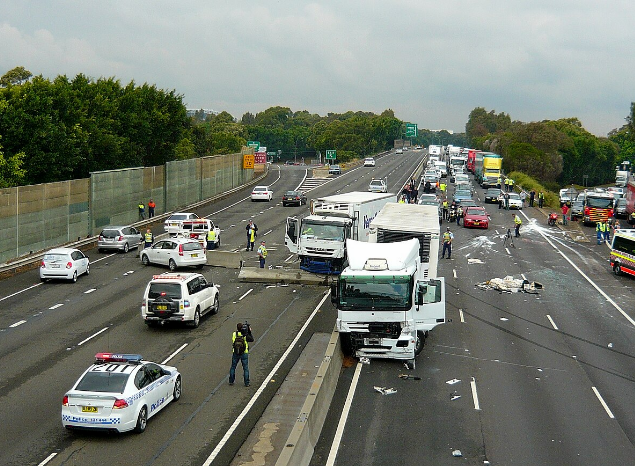
Distracted Driving
Multi-vehicle accidents are often caused by distracted driving. This is usually due to the use of a smartphone or texting. In California’s fast traffic, taking your eyes off the road or even your mind can cause a fatal pileup. Distracted driving may also lead to traumatic brain injury, one of the worst consequences of multi-car accidents.
In 2021, there will be 140 deaths from crashes caused by distracted drivers, an increase of 40% from the previous year. Drivers distracted by their phones or other distractions, whether on the congested roads of Orange County or the streets of Los Angeles, may fail to notice the traffic slowing down ahead and cause a series of accidents. Californian roads are dangerous, so staying alert and focused is vital.
In a Hurry? Dial +1213-596-0265 now!
Driving Under the Influence (DUI)
California highways continue to be plagued by the problem of driving under the influence. A driver’s impaired reaction time and poor decisions can lead to a multiple-car accident.
Swerving across lanes or failing to stop can cause a large number of vehicles to collide in one accident. DUI accounts for a large number of accidents (over 6,000 crashes in 2021 could be attributed to drunken or drugged driving). In 2022, alcohol-impaired driving will be a factor in nearly 1500 deaths in California crashes. To prevent these multi-vehicle crashes, it is important to avoid driving drunk (and keep an eye out for erratic motorists).
Weather and Road Conditions
California’s varied geography can lead to sudden weather hazards, which can result in multi-car accidents. A dense Tule fog in the Central Valley can reduce visibility to zero. In 2007, a foggy day south of Fresno caused a 108-vehicle pileup. High winds in the arid areas of California can cause dust storms that blind drivers. One infamous dust storm on Interstate 5 near Coalinga resulted in a chain collision involving 104 cars with 17 deaths.
Even rain is dangerous: after a long period of dry weather, the first rainfall can make roads incredibly slippery due to oil buildup. This leads to many accidents when drivers do not slow down. Snow or ice in mountainous areas can also have the same impact. California drivers are taught to be careful in these conditions, slowing down and using headlights when visibility is low, as well as increasing their following distance, to prevent massive multi-car crashes that can be caused by weather factors and road factors.
These factors can all combine. Imagine a worst-case scenario. On a rainy Los Angeles night, a driver speeds while texting, but fails to see the traffic stopped in front of them. They crash and pile up multiple cars behind them. Multi-car accidents are more likely to happen on high-speed highways and when drivers fail to react to unexpected hazards.
Common Car Accident Injuries
Car accidents can result in a variety of injuries ranging from minor aches and pains to life-changing trauma. A collision, particularly in a multi-car accident, can cause both visible and invisible injuries, which may require long-term medical care and extensive treatment. Anyone involved in an accident should be aware of the most common injuries and the potential for serious harm.
Some Common Auto Accident Injuries
Some of the most common injuries are: most common injuries are:
- Neck and Whiplash Injuries: Sudden shocks from a collision can cause the neck muscles, ligaments, and discs to be strained. Whiplash can cause headaches, stiffness, and pain. These symptoms may last for weeks or even months.
- Back Injury: The impact may cause herniated disks, spinal fractures, or muscle strains. This can lead to chronic pain and limited mobility.
- Broken bones: The most common fractures are to the arms, legs, ribs, and facial bones. These injuries often require surgery and rehabilitation.
- Lacerations and Cuts: Broken metal, glass, or debris may cause deep cuts requiring stitches or reconstructive surgery.
- Contusions and Bruises: An impact with the steering, dashboard, or airbags may cause soft tissue injury and significant bruising.
- Traumatic brain injuries (TBI) and concussions: Even mild concussions can cause dizziness and memory loss. Severe TBIs can lead to permanent disability or even death.
Catastrophic Injury
Some car accidents result in catastrophic injuries that can drastically alter the victim’s lifestyle. These injuries can cause permanent disability and require lifelong medical treatment. Examples include:
- Spinal Cord Injury: Damages to the spinal column can result in partial or total paralysis and affect mobility and independence.
- Traumatic brain injuries: These are severe and can affect cognitive function, speech, and motor skills. Rehabilitation is required.
- Amputation: In high-impact crashes, limbs can be severely damaged or even lost.
- Injuries to the Internal Organs: Injury to organs like the lungs or liver can be fatal and not immediately apparent.
- Burns Exposure to hazardous materials or fires during an accident can result in severe burns that require specialized treatment.
Hidden and Internal Injuries
Some injuries are not immediately apparent after a car crash. Internal injuries such as internal fractures or organ damage can be fatal if they are not diagnosed and treated promptly. Some symptoms include abdominal pain, nausea, and dizziness. It is important to have a medical evaluation following any accident in order to detect hidden dangers.
Psychological Injuries
Trauma from a car crash can lead to psychological injuries such as:
- Posttraumatic Stress Disorder (PTSD). Flashbacks and anxiety following an accident.
- Anxiety and Depression: Emotional reactions to injury, financial stress, or lifestyle changes.
- Phobias: Fear of driving or riding in a vehicle after an accident.
The Importance of Medical Care
Even if the injuries appear minor, it is important to seek immediate medical attention following a car crash. Early diagnosis and treatment prevent complications and provide documentation for personal injury claims. A car accident lawyer with experience can ensure that you receive the proper medical evaluation and that your injuries will be accurately documented in your case.
Long-Term Financial Consequences and Impact
Medical bills, lost wages, and ongoing care costs can be a significant financial burden. In the case of catastrophic injuries, home modifications, assistive equipment, and long-term care may be required. Auto accident victims face physical and emotional challenges that can affect their quality of life.
A California auto accident lawyer who is knowledgeable and experienced can help you navigate a complex legal and medical environment. They will work to get you the compensation that you deserve for medical costs, lost income, and pain and suffering.
The importance of medical attention and legal representation after a car accident is highlighted by the variety of injuries that can occur. This is especially true in multi-car accidents where there are greater risks of serious injury.
Who Is Responsible for a Multi-Car Pile-Up?
It is difficult to determine who is at fault in a multiple-car accident. For example, in a two-car accident, it is easy to determine who was at fault. Multiple drivers can share the blame in a chain reaction involving three, four, or a dozen vehicles. Depending on the actions and negligence of each party, they may share responsibility for an accident. This includes drivers, third parties, or entities such as manufacturers or mechanics. These are the key points to remember about liability.
Initial Driver vs. Following Drivers
The driver who caused the primary collision (the first impact) is often the main at-fault party. If, for example, Car A’s negligence caused them to crash into Car B, which then hit Car C, Car A will likely be held responsible. If Car A’s negligence (speeding, distraction, etc.) causes them to crash into Car B, which then hits Car C, Car A will likely bear a significant portion of the responsibility. This does not automatically absolve other drivers. They could be held partially responsible if Car B followed too closely, or if Car C drove carelessly. The actions of each driver leading up to a crash will be examined. Accidents that result in a chain reaction may be caused by the carelessness of multiple drivers.
Comparative Negligence in California
California has a comparative liability rule that applies to all accidents. California’s comparative fault system allows each party to be held accountable for their respective percentage of blame. Injured people can still receive damages, even if they were partially at fault.
Imagine, for example, a multi-car accident on the I-405 near Orange County. Driver X was distracted and caused the accident by hitting Driver Y. Driver Z, however, was tailgating and contributed to this pile-up because he did not stop in time. In this situation, Driver Z might be 30% at fault, and Driver X 70%. You (Driver Y), if you were injured, could bring a claim against X and Z.
If Driver Y was also at fault (perhaps because you suddenly stopped due to a minor accident), you could receive a percentage as well. However, you are not barred from recovering unless you were 100 percent responsible. California’s pure-comparative system allows even those who are 99% responsible to recover 1% from the other party. California has a very favorable law for plaintiffs. Other states may have stricter rules.
Joint and Several Liability for Injury
California law has also established joint and several liability in the case of economic damages. This means that if more than one defendant is found to be liable, they can each be held responsible for all economic damages (like medical costs and medical bills), regardless of their fault percentage. However, will pay their respective share. It’s a bit of a legal weed, but this ensures that an injured victim will be able to recover their losses, even if the party at fault is unable to pay. The real challenge is determining the percentages of fault.

In a Hurry? Dial +1213-596-0265 now!
Other Liable Parties
Although drivers are often at fault in accidents, liability can sometimes extend to other parties. It’s important to identify the driver at fault, but also consider other parties who may be liable. If a vehicle defect contributed (e.g., if the brake lights on one vehicle did not work, it could have caused others to not realize that it was stopping. A vehicle manufacturer or mechanic may be partially liable.
A government agency may be responsible if poor road maintenance or design played a part (for example, a lack of signage in a construction area that caused sudden braking). They are rarer, but an investigation will look at all the possible causes.
Example Liability Scenarios
Imagine a chain reaction accident: A car D at the end of an alternating traffic line rear-ends a car C, pushing it into a Car B and a Car A. If Car D was simply not paying attention, then Car D could be 100% responsible for all damages. But real life is often messier. Imagine that Car D did not realize C had stopped because the brake lights on Car C were out.
Imagine that Car B had been driving drunk and hit Car A even before the rear impact. In such a situation, the blame could be divided: Car B, for hitting Car A (due drunk driving), and Car D, for hitting C (perhaps partially excused due to the brake light problem, but still too close) while even Car C may bear a small share of fault for the defective brake lights that caused a hazard. The negligence of each driver is considered. In a multi-car accident, it’s not uncommon for several drivers to share the blame. It is important to ask: Whose negligence led or contributed to the accident?
Summary: Liability can be shared by several people involved in a multiple-car accident. California law allows accident victims or other injured parties the right to sue negligent drivers for compensation. Finding out which drivers are negligent and how much each one is to blame is the most difficult part of a multi-vehicle crash claim.
How to Prove Liability in Multi-Car Crashes?
It can be difficult to prove liability in a multiple-car accident. The situation becomes more complicated when there are so many cars involved. This is because it’s necessary to analyze the accident site to collect crucial information such as witness statements, police reports, and photos. These are all essential to proving negligence and fault.
Concurring Accounts
Each driver or witness may have a different view of what happened (Driver A was too slow, “No, Driver C was speeding”, etc.). There are often conflicting reports, where each person points the finger at another. Insurance companies are aware of this and take advantage of the confusion. It’s not uncommon for insurers to say that their driver wasn’t at fault, and that the other driver was. Tenina Law pointed out on social media that insurance claims following multi-car crashes can be complex. There are multiple parties involved, there may be conflicting reports, and insurers will try to avoid liability by pointing the finger at each other.
Multiple Impact Points
In a pileup, several collisions may occur in rapid succession. In a pile-up, your front car may have collided with the car in front, and then another vehicle could have struck your rear. You have two sources of damage and possibly injury. It’s important to ask: Did your injuries result from the first or second hit? Was it the person who struck you or someone pushing them behind? It can be difficult to determine the exact sequence of impacts and to link each one to specific injuries or damages.
How to Determine the Chain of Causation
To prove fault, you must establish the cause of each component of the accident. It’s much easier in simple accidents. You may need accident reconstruction specialists to examine the scene in multi-car accidents. To determine how the accident unfolded, they look at skid marks, vehicle damage profile, and stopping distances. Experts might, for example, determine that the impact of Car D caused the entire forward damage, while the impact of Car B was minor and caused only a small part. These investigations require time and resources.
Need for Detailed Evidence
Evidence is important because stories can be contradictory. Traffic or surveillance cameras, black boxes (event data recorders) from cars, and physical evidence at the scene can all be key evidence. Police in California will investigate large multi-vehicle accidents, but the reports may not assign fault when the crash is complex. It’s possible that you need to hire an expert for further analysis. It is crucial to gather this evidence as quickly as possible. Skid marks can fade, cars are repaired, and witnesses’ memories may change.
Complexity of Insurance and Legal Issues
The insurance companies of each driver will be notified. It is possible to deal with up to four insurance companies. Each insurance company may try to reduce its payout by claiming that its driver wasn’t the primary cause. Insurance investigators may be assigned to examine the wreckage and witnesses’ statements. This can cause the claims process to drag out, especially when insurers disagree with each other.
These cases can end up in court if the parties cannot agree. A jury will then decide the fault. Multiple injury claims and lawsuits can occur simultaneously in multi-car accidents, making it a logistical nightmare for someone with no legal experience. A car accident lawyer can guide you through the complicated claims process and deal with insurance companies to maximize your compensation.
Cities and Regional Factors
Multi-car accidents vary in frequency and type depending on the region. For example, in Los Angeles or Orange County, the sheer number of vehicles on freeways can cause pile-ups. While not a common occurrence, they do occur quite often, especially on highways such as the I-5, I-405, and I-10. Los Angeles car accidents involving multiple vehicles present special challenges because of the heavy traffic and complicated liability issues.
Long Beach as well as Irvine are both high-traffic areas in Southern California. They also see a lot of accidents that result from chain reactions. San Diego highways like the 5 and 805 are prone to multi-car accidents during rush hour. Multi-vehicle crashes can happen on bridges and freeways in San Francisco, the Bay Area. Think of the Bay Bridge and Highway 101. Sometimes they are aggravated by rain or fog.
San Bernardino, Sacramento, and other areas may have fewer accidents involving multiple cars daily than L.A., but are not immune. The I-15 corridor in San Bernardino, as well as the foggy I-5 and I-80 stretches along the Sacramento Valley, have all seen significant pile-ups. So across California, multi-car accidents remain a concern. Every location has its risks (weather, gridlock, and other factors). But the challenge to prove who is at fault in these accidents is universal.
It is clear from all of these complications that determining the fault in a multiple-car accident is not an easy task. This requires an in-depth investigation, and sometimes a battle with the insurance companies that may be happy to deny responsibility. It is important to have a knowledgeable advocate by your side.
How a Personal Injury Lawyer Can Help Strengthen a Multi-Car Accident Claim?
Consult an experienced personal injury lawyer after a multi-vehicle crash. This is your California car accident attorney, Allah Tenina. Personal Injury Lawyers are crucial in the handling of complex multi-car accident claims. They can help with gathering evidence, negotiating with insurance companies, and maximising your compensation.
Why? The guidance of an attorney can be a big help in proving the claim and ensuring you receive fair compensation. The majority of car accident lawyers work on a contingent fee basis. This means that you don’t pay anything unless you win. A lawyer can be of assistance in a case involving multiple cars.
We offer a free legal consultation to discuss your case after a multiple-car accident.
Thorough Investigation and Evidence Gathering
An experienced lawyer will investigate the accident quickly. Our legal team gathers police reports, traffic camera footage, photos from the scene, measurements of skid marks, vehicle damage analysis, and witness testimony. Lawyers often work with accident reconstruction specialists to reconstruct complex scenarios involving multiple cars.
They know which evidence is crucial. Downloading crash data from cars or obtaining 911 records are examples. This comprehensive approach aims to clarify fault where it is not immediately apparent.
Identification of All Liable Parties
An attorney for car accidents will review all the facts and identify any parties that may be responsible, not just the obvious ones. Perhaps the driver who hit your car was at fault, but another driver’s carelessness may have also contributed. Your lawyer will make sure that all parties responsible are named in the lawsuit. In California, you can sue anyone who is at fault. It is important to make sure that you don’t leave money on your table by overlooking someone else’s negligence.
A Guide to California’s Comparative Negligence Law
A California car accident attorney can protect you from unfair accusations if you’re accused of being partially responsible for the accident. Insurance companies may try to claim that you are partially responsible for the accident (for instance, “you braked suddenly” or “you were not paying attention”) to reduce their liability.
A good lawyer will use evidence and push back against unsubstantiated claims. If you were at fault in a minor way, your attorney will work to reduce that percentage. California is a state that has pure comparative negligence, so even if there is some fault on your part, you may still be able to recover damages. Your lawyer’s goal is to maximize your recovery by minimizing the perceived fault you have and helping you receive compensation for your losses and injuries.
Multiple Insurance Companies
It’s hard enough to deal with just one insurance company following an accident; having to deal with three or more is overwhelming. A lawyer can take care of all communications with insurers once you have hired them. You won’t be contacted by adjusters of different insurance companies who will try to get you to give statements or accept quick settlements.
Your lawyer will present the evidence before the insurers to establish the insured’s responsibility. Let your attorney help you cut through the noise if insurance companies are pointing at each other. They are familiar with the tactics used by insurers and will not be intimidated. The lawyer is your voice in front of the adjusters.
How to Prove Your Case and Build Your Case?
It has been discussed that proving liability in a multiple-car accident is the most difficult part. Attorneys can create a coherent narrative from a mess of facts. The collected evidence will be used to reconstruct the sequence of events and identify who was negligent. A lawyer could, for example, show that the driver of Car A was speeding, and this set things in motion. The driver of Car B might have been able to stop if Car A had not been negligent.
Your lawyer can use a strong case to pressure the parties at fault to accept their responsibility. If necessary, they can also file a lawsuit for personal injury to seek damages to compensate you for your injuries or losses. Tenina Law’s car accident team stresses that determining who is responsible can be difficult, but they’ll collect evidence and build a strong case to determine who’s at fault. This is the type of work required in claims involving multiple cars.
Negotiating Fair Compensation
Settlement negotiations can become complicated when there are multiple parties involved. A skilled attorney will know how to handle a situation with multiple defendants. They can use evidence of fault to force the responsible parties (or insurers) to offer a fair settlement. They will negotiate with the insurers and evaluate your case to ensure that you receive maximum compensation.
Your lawyer will also make sure that any settlement includes all of your losses, including medical expenses, car repairs, and lost wages. Your lawyer will fight for you to receive full compensation. Insurance companies may try to divide and conquer, each paying a smaller portion. Sometimes, if one insurance company is aware that another may share the liability, they will both attempt to pay less. An attorney can help coordinate a global settlement in which all insurance companies contribute their fair share.
Litigation and Legal Strategies
A personal injury attorney can sue on your behalf if the insurance companies refuse to agree to a fair settlement. In a multi-car accident lawsuit, your car accident attorney might sue several defendants at once. Your lawyer will take on all parties responsible for the accident and seek compensation. They can handle complex court procedures such as cross claims between defendants.
A lawyer is someone who knows how to deal with these complex legal disputes. When you have a lawyer ready to go to court to fight for your case, the insurance company is more likely to make a fair settlement offer than to gamble on suing. If a trial is necessary, your attorney will present the evidence to a jury to prove who caused the accident.
Local Knowledge and Experience
Our car accident lawyers are familiar with common scenarios for accidents in California because Tenina Law has clients throughout the state. For example, we know that a collision on the 405 near Irvine may involve factors different from one on a rural road outside Sacramento. Local experience is important for gathering evidence. For example, knowing if there are traffic cameras on a freeway or if an intersection is a danger spot.
Also, we stay abreast of California traffic laws and regulations, which could affect liability. Working with a California auto accident lawyer can help strengthen your claim and navigate insurance claims and compensation effectively.
Support and Guidance All Along the Process
A California auto accident attorney can provide peace of mind. Multi-car collisions can be traumatizing. It’s difficult to deal with multiple adjusters, injuries, and no vehicle. If you hire an attorney, he or she will guide you in what to do and what not to do, such as avoiding recording any statements without legal counsel. They will handle all the stressful situations so that you can concentrate on healing from your injuries.
Tenina Law is proud to support accident victims, as well as other clients, financially, emotionally, and mentally in the aftermath of an accident. Your lawyer will be your advocate to help you get back on track.

Call Tenina Law Today to Untangle the Wreck
Liability issues in California are unique. It’s not always easy to determine who is responsible. Often, several people are involved. Investigations can be complicated, and claims processes can become a battle between parties who deny fault.
Understanding the factors involved and California’s comparative fault rules is an important first step. Getting help from a California car accident lawyer or attorney can make a huge difference. These professionals are equipped to deal with multi-car accidents, unravel the web of responsibility, protect your rights, and fight for compensation after a multiple-vehicle accident.
Do not hesitate to seek legal advice if you or someone close to you has been injured in an accident with multiple cars, whether it was in San Diego, San Francisco, or anywhere else. Tenina Law is experienced in handling car accident claims. We are ready to guide you on the path toward justice and recovery.
Remember that there are options available to you even when the accident becomes complicated. Contact us for a case evaluation if you’re considering taking legal action following a multi-car crash.

